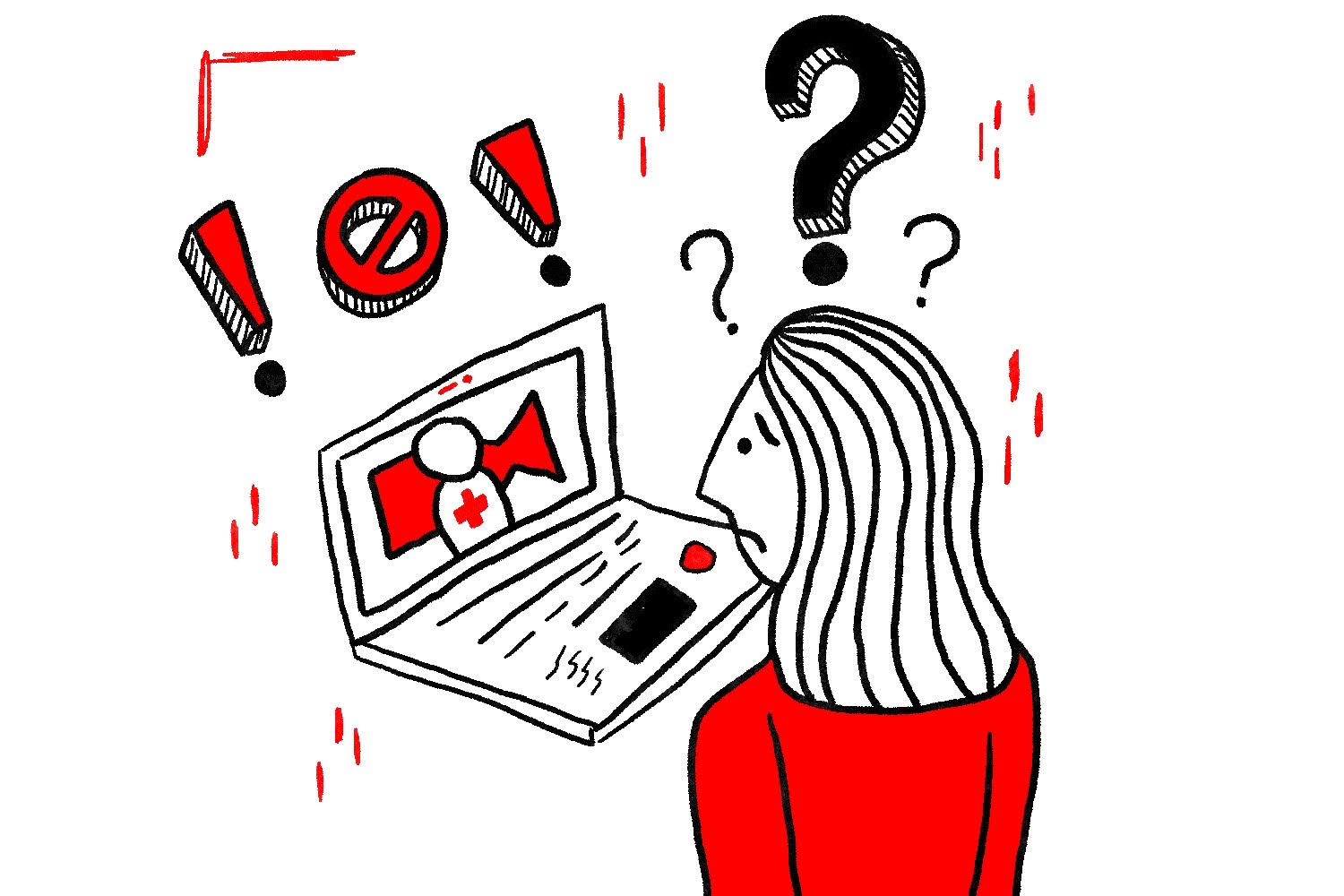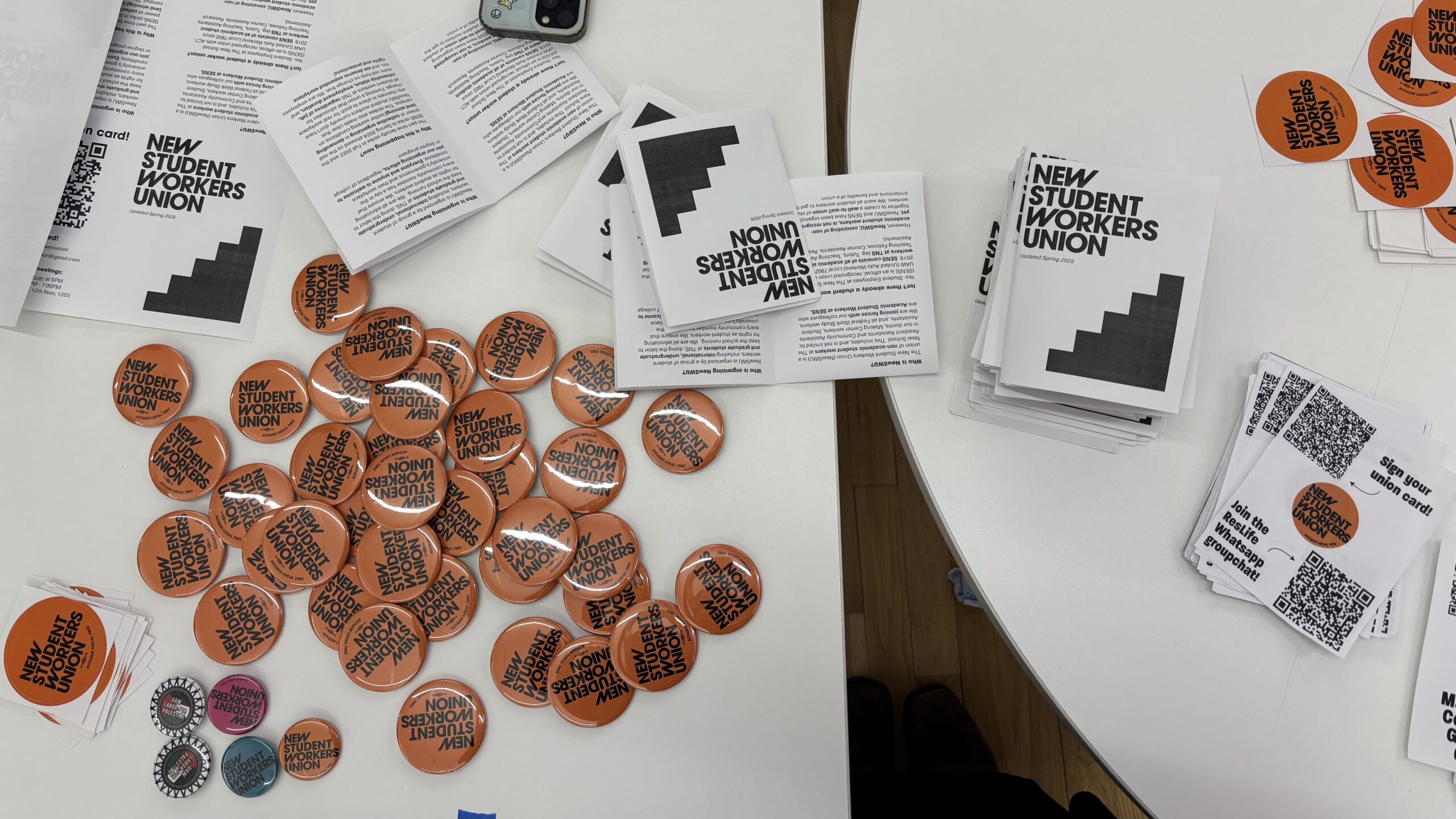Illustration by Simon Chen
In early May, amidst the coronavirus pandemic, I had a virtual appointment with my physician’s assistant/nurse practitioner at The New School discussing switching my medication. Opening my laptop for the appointment, I was hopeful. I was so frustrated with my current medication for my chronic polycystic ovarian syndrome (PCOS), and was excited about the possibility of a better treatment. My nurse practitioner told me they could change the medication, and I felt relief that the side effects could subside. But then, they told me that after two weeks, they would no longer be able to monitor me. I closed my laptop in disbelief. I was essentially on my own, which is how my journey with PCOS has always felt. But this time the loneliness felt different, because before at least I had my nurse practitioner.
The university had decided to furlough the medical providers at the school’s Student Health Services, and students were told that if they needed a medical professional to seek out their local providers. I was left taking medication I had never taken before without access to my medical provider.
This was a problem for me because as someone with a chronic condition, I relied on my consistent relationship with my nurse practitioner at TNS. I would have to find a medical provider in the Los Angeles area where I relocated after the school shut down and am still living now. Then, I would have to start from scratch with a new doctor. This was a multitude of headaches.
I have been dealing with my hormone condition for 10 years and rely on medication to regulate hormones that prevent my risk for cervical cancer. Without treatment, my lack of ovulation results in my uterine lining increasing in thickness and is known to be a cause of cervical cancer. My hormone imbalance is a cause of my unpredictable moods, hot flashes, uterus pain, and irregular periods. People with PCOS can also experience acne, excessive hair growth, and weight gain. I feel like I am in menopause at 22-years-old and have felt this way since the age of 12 when I was diagnosed.
I brought my nurse practitioner at TNS up to speed last year, where my condition is at and they had been monitoring me from fall 2019 through spring 2020. Since I had moved to New York City and joined the university’s health plan, I discontinued my health insurance back home. So, when I was told in May that I would have to rely on a medical provider back home, I had no one in mind because rejoining my old health plan was not financially possible. Two weeks notice was all I got from the school to figure out what I would do about finding a medical provider. Two weeks notice and reassurance that providers at TNS would become available once school started again in August.
No access to my health provider at TNS after starting new medication meant no emailing, no calling, no communication at all with my provider.
I did what the university instructed me to do. I found a local provider through my insurance that cost me a $15 copay each visit (the school’s visits did not cost me any co-pays, as they were included in the student insurance fees).
I was seen by urgent care and was instructed not to stop taking the medication I was having issues with until I spoke with the provider who prescribed it. This was was not an option as the university had furloughed my medical provider.
Not being able to access my medical provider who prescribed me medication felt like the university was saying to me that my condition, my medical needs and my need to speak with my provider was not essential. No form of health care should be able to be deemed not essential or delayed in the middle of a global health crisis as the world battles the coronavirus.
The medical providers at TNS should not have been furloughed this summer and, while some providers were brought back this fall, mine was not.
Students need their medical providers, especially during this health crisis. Now more than ever, access to medical providers – especially ones you have built a relationship with — is essential. It can be difficult to find a new provider during a pandemic as many doctors are not seeing new patients.
I also see a neurologist for chronic migraine with aura, migraines that prevent me from being able to see clearly when an episode begins. I am currently on a two-month long waitlist for an appointment with a local L.A.-based neurologist, one who I have never seen before and will have to bring up to speed on my conditions. Again, starting from scratch with a new provider and one who I will leave when I get back to New York City will start the process all over again.
On Aug. 5, I received an email from Student Health Services that stated some of the medical providers would be back the week of Aug. 17, and that I could expect to hear from a provider then. The email also stated that until then SHS could not provide any medical care and I would need to find a local provider.
I discontinued taking the medication that gave me negative side effects and cut the treatment for my condition “cold-turkey.” Four months later, I am still in the process of finding medical care in my area.







